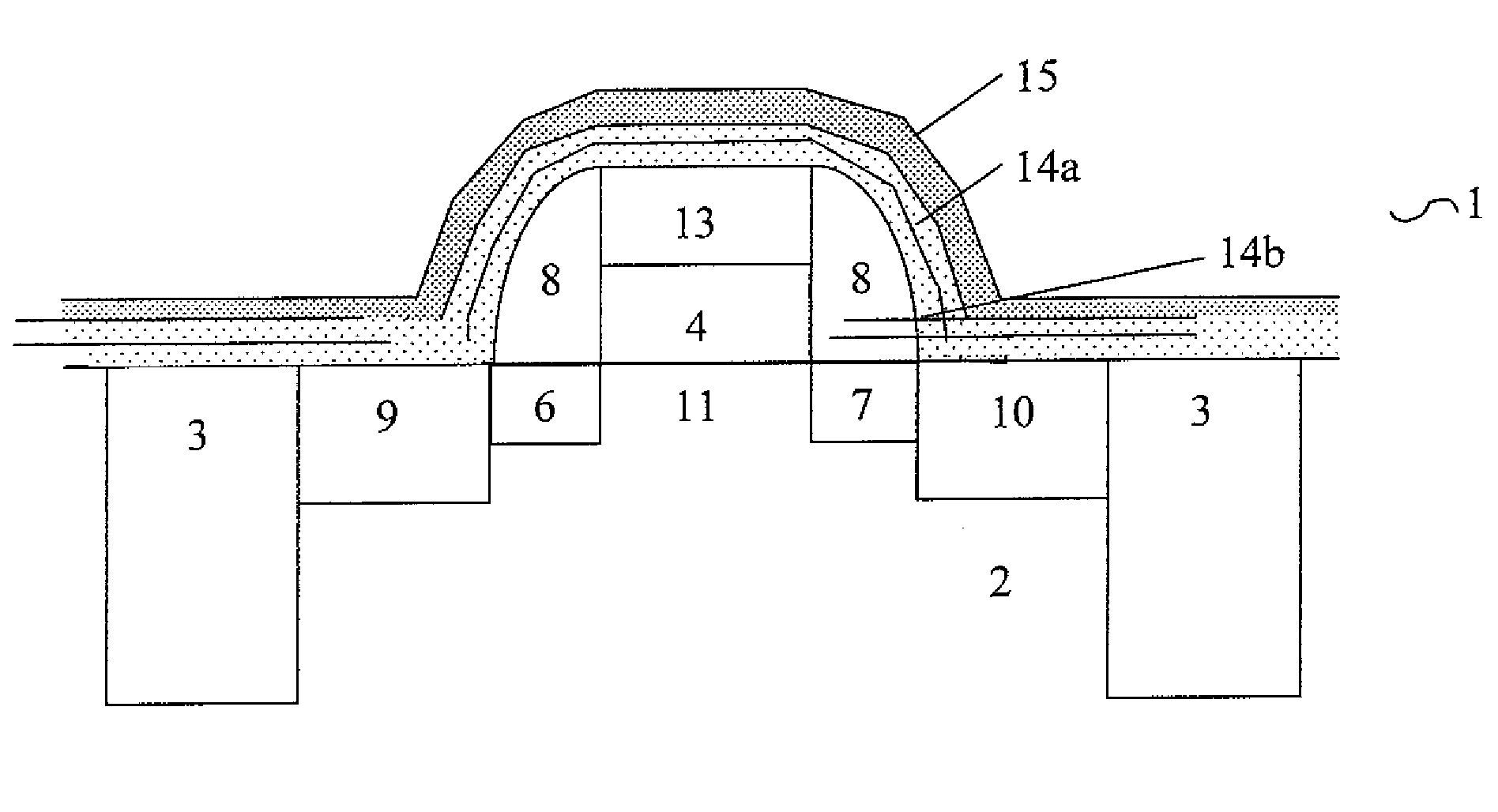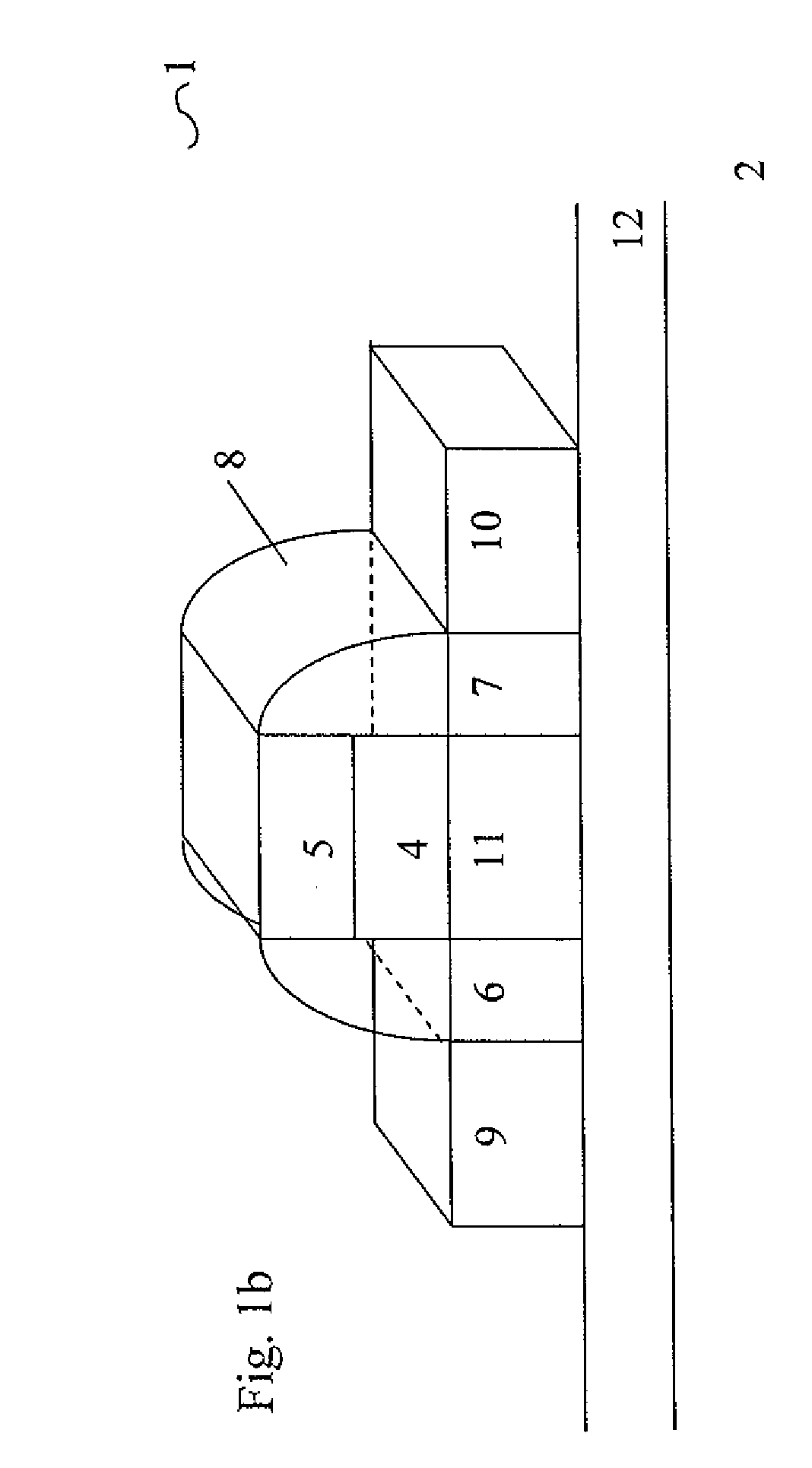Low work function metal alloy
a low work function, metal alloy technology, applied in the direction of semiconductor devices, electrical apparatus, transistors, etc., can solve the problems of not being able to teach the formation of a fully silicided gate electrode using such binary alloys, unable to achieve the desired work function of both nmos and pmos devices in view of controlling the threshold voltage, and the threshold voltage is too high compared with the supply voltage, etc., to achieve the effect of easy implementation
- Summary
- Abstract
- Description
- Claims
- Application Information
AI Technical Summary
Benefits of technology
Problems solved by technology
Method used
Image
Examples
example
[0200] In an embodiment as depicted in FIG. 2f, the formation of a NiYb silicide is disclosed.
[0201] On p-type silicon substrates (2) MOS capacitors were fabricated by first depositing a SION dielectric layer (4) thereon.
[0202] SiON layers with various thicknesses have been formed on various wafers.
[0203] On top of each dielectric layer (4) undoped polysilicon (13) is deposited using Chemical Vapor Deposition (CVD).
[0204] The polysilicon layer (13) had a thickness of about 100 nm. On top of each polysilicon layer a layer stack (14) of ytterbium (Yb) (14a) and nickel (Ni) (14b) was deposited by Plasma Vapor Depositing (VPD) in an argon ambient. Yb was deposited at a rate of about 10 nm / min, and Ni at a rate of about 17 nm / min.
[0205] Firstly both Ni and Yb were co-sputtered for 1.5 min. Then the deposition of Yb was stopped while the deposition of Ni was continued for another 2.5 min.
[0206] In total about 68 nm of Ni and about 15 nm of Yb was deposited resulting in a total metal...
PUM
 Login to View More
Login to View More Abstract
Description
Claims
Application Information
 Login to View More
Login to View More - R&D
- Intellectual Property
- Life Sciences
- Materials
- Tech Scout
- Unparalleled Data Quality
- Higher Quality Content
- 60% Fewer Hallucinations
Browse by: Latest US Patents, China's latest patents, Technical Efficacy Thesaurus, Application Domain, Technology Topic, Popular Technical Reports.
© 2025 PatSnap. All rights reserved.Legal|Privacy policy|Modern Slavery Act Transparency Statement|Sitemap|About US| Contact US: help@patsnap.com



